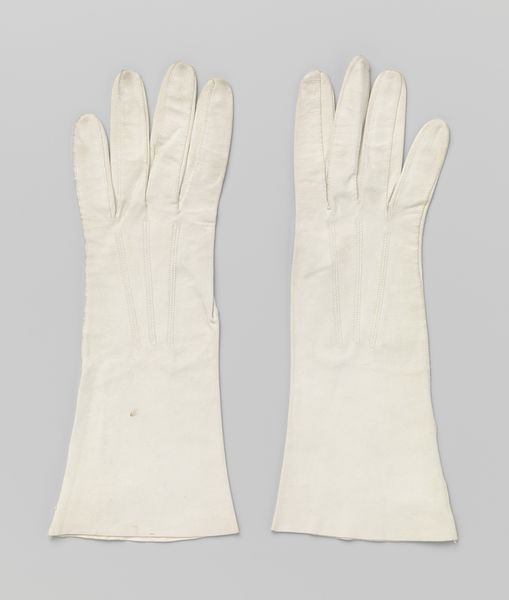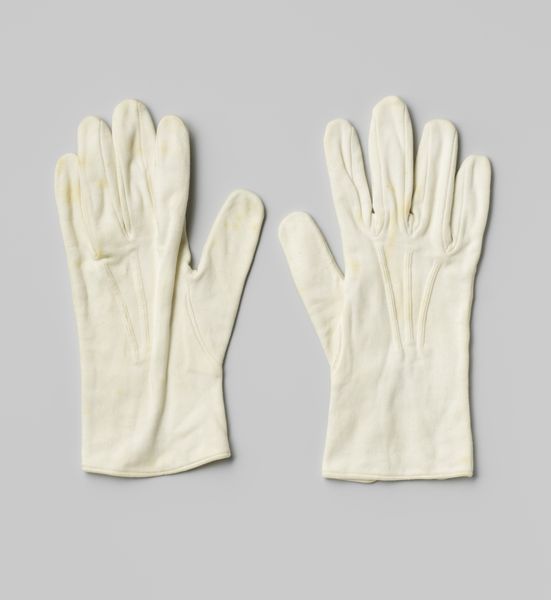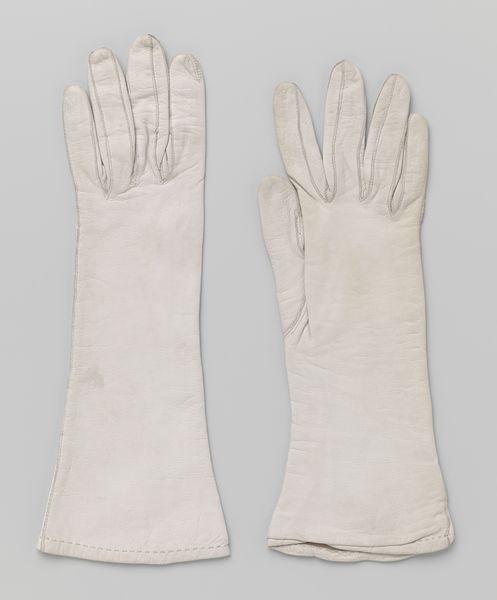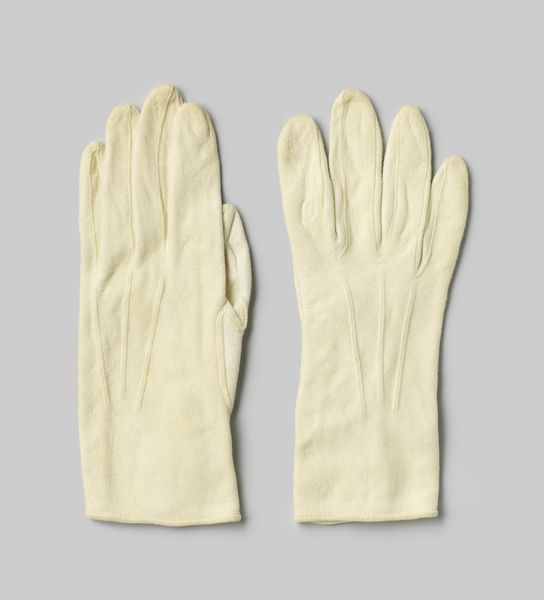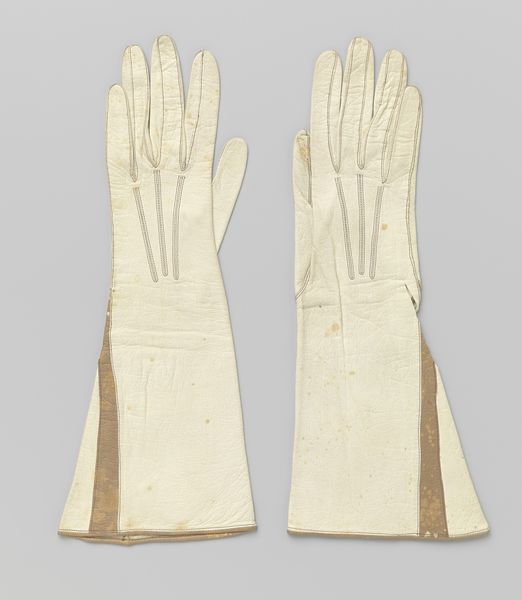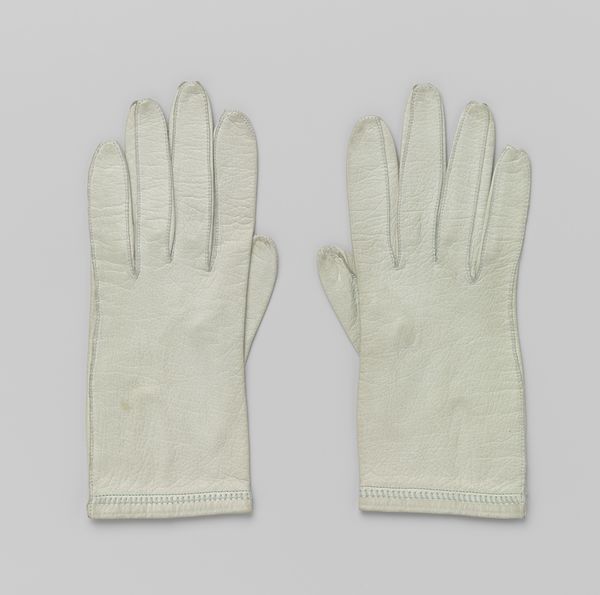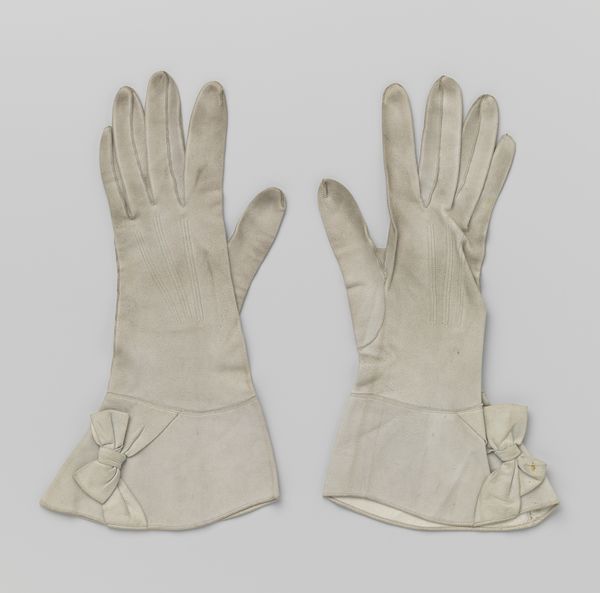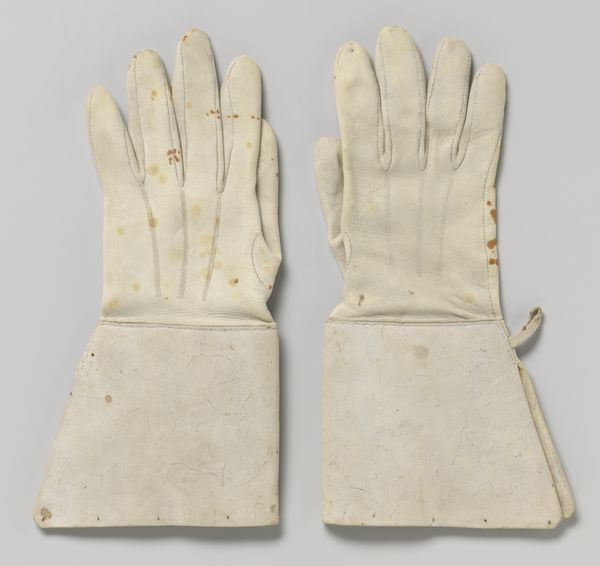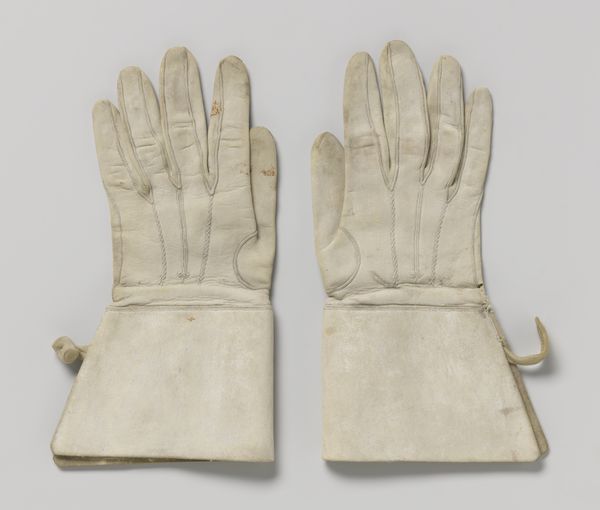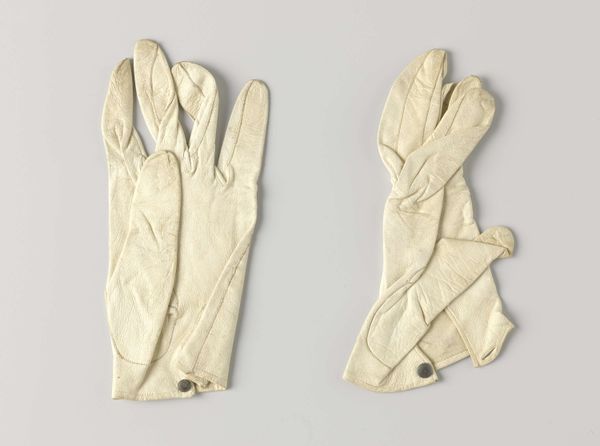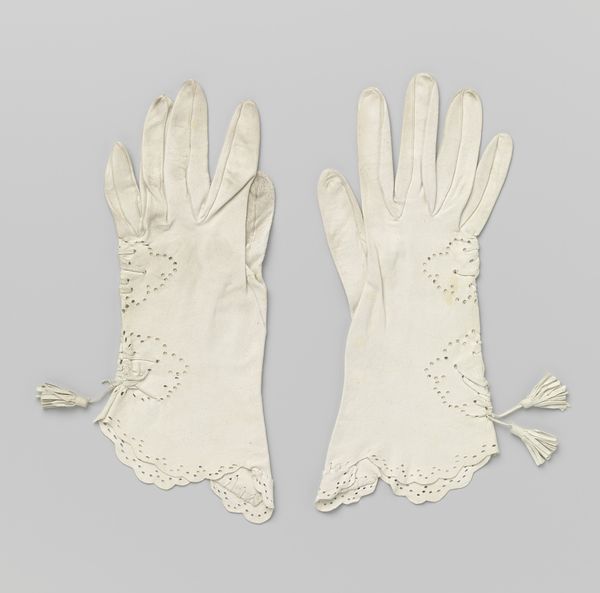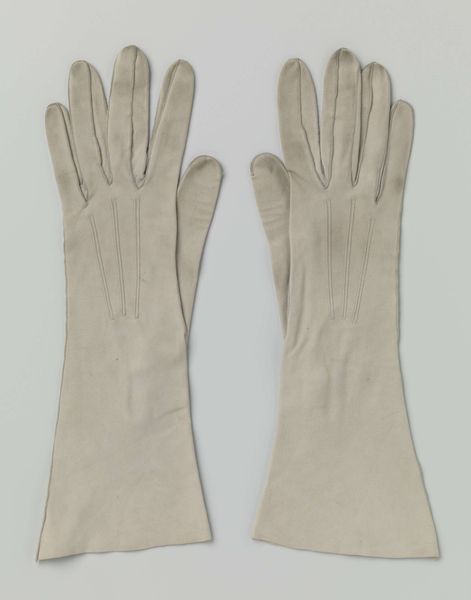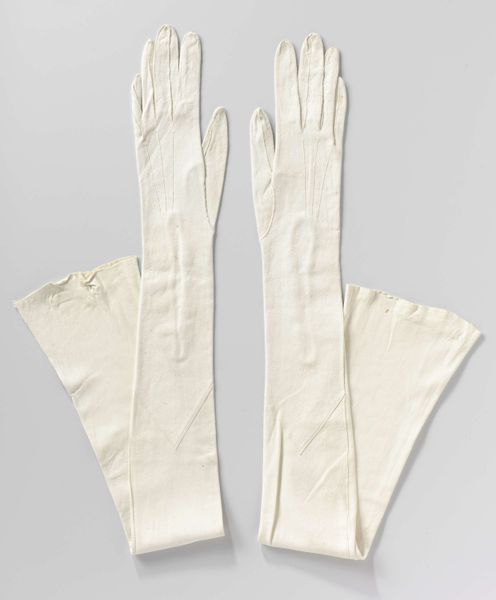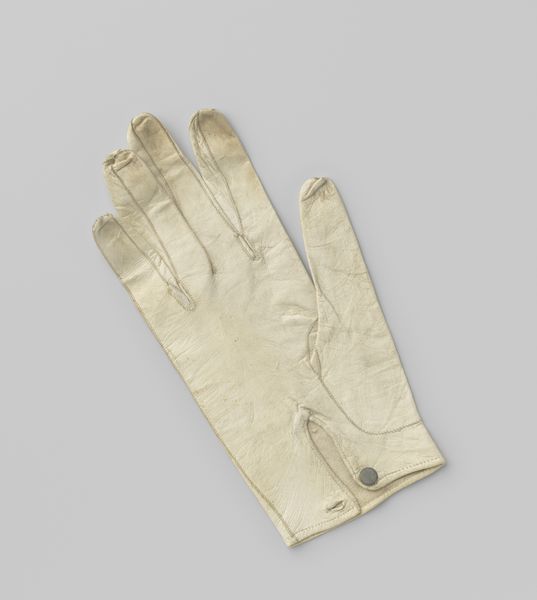
textile, photography
#
fashion design
#
fashion mockup
#
textile
#
fashion and textile design
#
fashion based
#
photography
#
teen youth wear
#
clothing photography
#
wearable design
#
clothing photo
#
fashion sketch
#
clothing design
Dimensions: length 23 cm, width 10 cm
Copyright: Rijks Museum: Open Domain
Editor: Here we have "Right Glove of White Thick Chamois Leather," dating from around 1910 to 1930. There's something quite austere about its presentation; the pale colour and the stiff way the glove sits. How do you interpret this work? Curator: I see these gloves as deeply embedded within a specific cultural and historical context. The early 20th century saw strict social codes dictating appropriate attire. Gloves weren’t merely functional; they signaled status, gender, and class. What statement might the whiteness make? Editor: Perhaps the purity, delicacy, wealth… a person who doesn't have to do much with their hands. Curator: Precisely. Consider the rise of the women’s suffrage movement during this time. White was adopted as a symbol, initially for purity, and later as a statement. These gloves, while seemingly passive, might carry subtle yet potent undertones of gender politics. Were they made to make a political statement? Editor: So, even an everyday object like a glove can become charged with meaning depending on who is wearing it, and when? Curator: Absolutely. Objects, like art, reflect and reinforce societal structures, sometimes consciously, sometimes unconsciously. This piece offers an intersectional lens through which we can explore identity, gender roles, and the power dynamics inherent in fashion. Editor: I had never thought of gloves having such layers of meaning! This really encourages us to question the seemingly mundane aspects of our material culture. Curator: Indeed. Examining art through these lenses reveals how profoundly intertwined aesthetics are with our lived experiences and the politics that shape them.
Comments
No comments
Be the first to comment and join the conversation on the ultimate creative platform.
